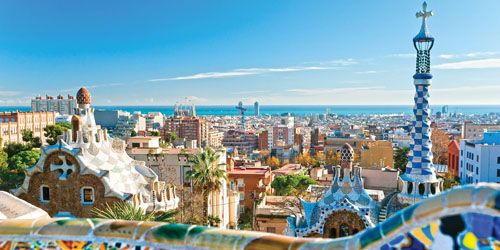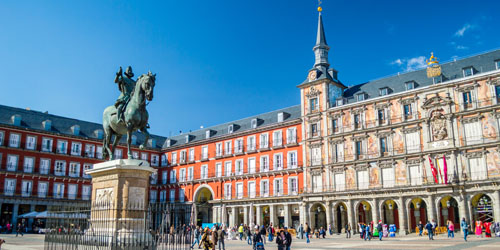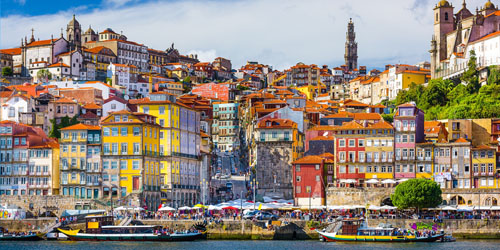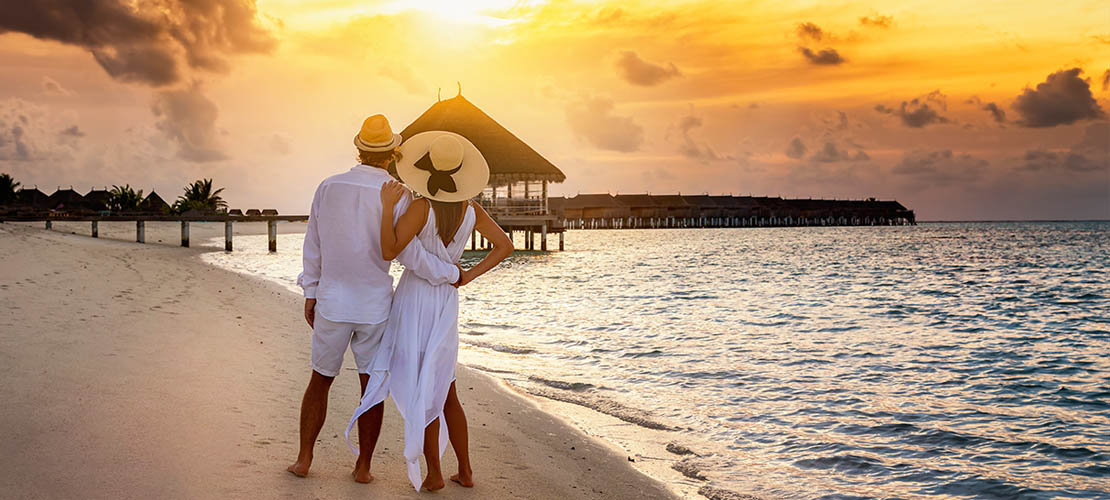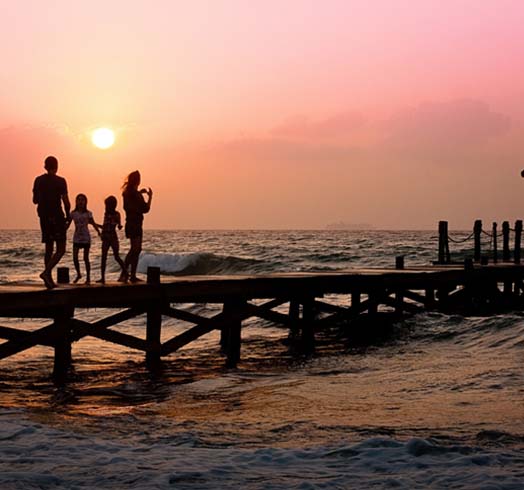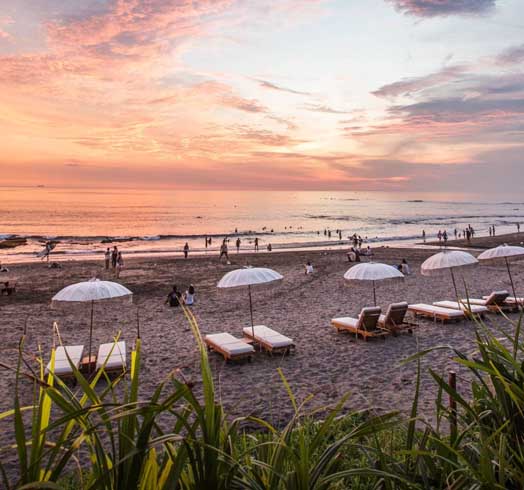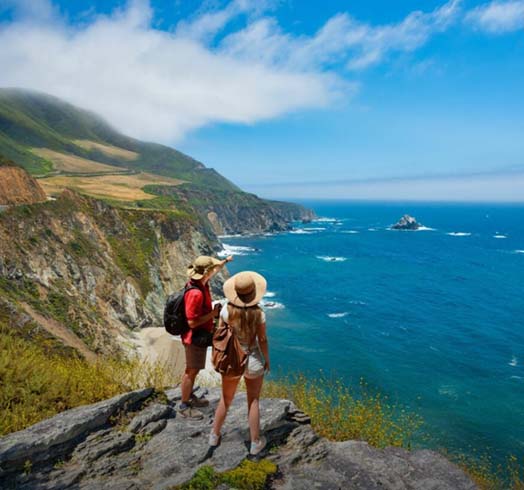Visit Spain from Mauritius
Spain is an exaggerated expression of beauty. A juxtaposition of wild and tame, layered and exotic. You simply have to go there at least once in your life. People might say that Spain is living proof, thriving with culture and wonder with having several things to do in Spain by people of all age groups. Seeing the beautiful landscapes, splendid mountain ranges and turquoise blue Mediterranean waters; encountering historical cathedrals such as Parc Ciutadella in Barcelona or Alhambra Palace at Granada before savoring Spanish paella is what attracts travellers to Spain.
A little more than two years ago, Spain was the second most visited country in the world. That year alone close to 82 million tourists arrived there by airplane or ship. With its scenic coastlines, interesting landscapes and rich culture there is a lot to see here; it’s no wonder then that tourists want to come back.
Geography Of Spain
With its four islands and several mountain ranges, Spain is the fourth largest country in Europe. Located between Gibraltar, Portugal and Morocco with the Pyrenees marking its natural boundaries to the east; due north there is a long border of 1214 kilometers (753 miles) commonwith Portuguese Spain--the longest uninterrupted European Union boundary.
Climate Of Spain
Spain's climatic zones fall roughly into three types- those with warm, dry summers and Mediterranean climate; those that are desert-like becoming semi arid in places (such as Alicante or Valencia provinces); oceanic which means they have winters influenced by the ocean. Some areas have climates such as alpine and humid subtropical, even tropical. Its climatic diversity makes it interesting for tourists planning trips to Spain at different times of the year. The best time to go is the high season (June-August), but it's a low season for some parts of inland Spain. The low season is November to February, when central Spain is cold and there’s rain in the north. But it is summer at ski resorts and the coasts are mild.
Spanish Culture
Spain's abundant culture is a big attraction for tourism. As far back as the Middle Ages, Spain’s past often winds its way into the present through all of these monuments and cathedrals. Spain's long, rich history has been colored by all kinds of wars and upheavals, and the country today is like an intricate mosaic containing pieces of everything that ever happened. Spain’s cities, with their iconic architecture and palaces as well charming cobbled strets; its warm people that make every trip to this European country an unforgettable experience.
Spanish Cuisine
Spain is the gourmand's locus, a land where good food and wine are always close by. Spanish food is natural, local and a veritable repository of traditional dishes that have been cooked with affection. Spanish love their food and you will be surprised at what variety of foods there are to eat. While you've perhaps already tried Spanish tapas or paella, can you imagine eating it all at its source? Spiced with Spanish cuisine Jamon, churros or perhaps the famed Spanish wine--ecuisine forms an integral part of a tourist visit to Spain, and rightly so.
Best Time to Visit Spain
The best periods to visit Spain are late spring (April-May) and early autumn (September-October), when temperatures aren't extreme and crowds light. But the country’s variety means that you can have a good time at any season.
Spain has a relatively mild climate, and remains mostly dry all year round. The summer can be very hot, in particular the south. European travelers arrive at peak season to its fashionable beach resorts. With lower temperatures in the north, it's a good option during summer if you are afraid of heat.
Winter temperatures rarely fall below 10°C. The north can get cold and wet, but the south is still temperate.
Best Places to Visit in Spain
Barcelona
As well as being one of Europe's leading travel destination, without a shadow of doubt Barcelona is Spain's cultural capital. Among other Antoni Gaudí-decorated spaces, the Catalonian city's urban sprawl also covers Basílica de la Sagrada Família and Park Guell as well as museums filled with works from renowned artists of every age like Picasso. You may also explore centuries-old neighborhoods, such as the Barri Gòtic that dates back to Roman times. Also, don't overlook the city's equally spectacular outdoor attractions-for example La Barceloneta beach.
Santiago de Compostela
Another stop on an ancient pilgrimage route called Camino de Santiago (or Saint James 'Way), this 19th-century city in northwestern Spain is a destination that greets hundreds of thousands of visitors every year. History buffs and culture hounds make Santiago de Compostela, with its centuries-old architecture (plus a UNESCO World Heritage Old Town), their ideal destination. On top of your to-do list should be a sightseeing tour around the majestic Santiago de Compostela Cathedral, this huge Romanesque building supposed to hold the tombs of Saint James the apostle. Then take advantage of the city's many beautiful parks, museums and restaurants as well as its thriving nightlife.
Segovia
Next time you go to Spain, don't overlook this romantic Spanish city located some 55 miles northwest of Madrid. Stroll through the charming Plaza Mayor or take to the skies on a hot air balloon ride, and see for yourself what makes Segovia so special. Not to be missed are the two-tiered Aqueduct of Segovia, one of the world's best preserved Roman aqueducts; and Alcázar De Segovia, a massive fairy tale fortress dating back to 12th century Spain.
Costa Brava
With miles of shoreline along the Mediterranean Sea, this Spanish coastal area lies from idyllic resort town Blanes all the way to France. Spending the day with your toes in the sand on one of Costa Brava's idyllic cove beaches, enjoy a fine dinner at any number of seaside restaurants. But Costa Brava isn't only for the beach bums. Whether you visit the one-of-a kind Dalí Theatre Museum in Figueres or stroll through the Santa Clotilde Gardens of Lloret de Mar, Costa Brava is an essential stop on any Spain travel itinerary.
Cordoba
The UNESCO-designated Spanish dream: Cordoba's historic center. Its winding, closely packed cobblestone streets are lined with whitewashed inns, shops and houses boasting Andalusian-influenced accents: carved balustrades on their picture windows; planters of bonsai oleander plants bright blue against the gray stone; painted archways. In addition, visitors are able to appreciate all of the city's famous historical sites including the Castle of Christian Monarchs and Mosque-Cathedral Cordoba (the so called Great mosque), which is one of Spain's best preserved structures.
Menorca
For travelers who want to see the Balearic Islands without getting smothered by noise and crowds, Menorca is Mallorca's little sister. Menorca offers the same kind of jaw-dropping beaches (think: travellers say that the island’s most popular shorelines include Cala Mitjana, Cala Macarelleta, Cal Turqueta and Cupula Pregonda. You won't find such white sands overlooking clear turquoise waters as these on other Balearic Islands either. You'll also see many architectural treasures scattered all over Menorca. Take a trip to Ciutadella (the first capital city of the island) where you can find old-fashioned buildings such as Catedral de Menorca and Convento Sant Agusti, which is home to the Diocesan Museum.
